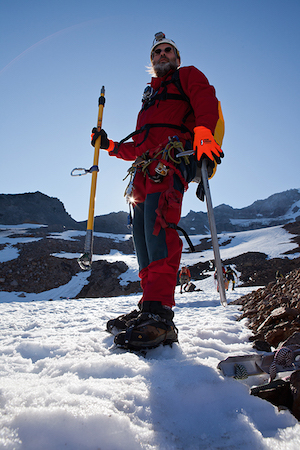There are many places in the world that can justifiably say they are struggling with drought this spring. Portland is not among those places.
It is easy to see why many people assume Portland is facing drought. Snow levels are below average throughout the Pacific Northwest. Drought has become a fact of life in California, where mandatory water conservation laws are tightening. Snow monitoring sites across Oregon are reporting record lows. Rural counties are declaring drought emergency. Farmers are rightfully concerned; skiers and snowboarders are rightfully bummed. The snow pack on Mount Hood at 6,000 feet is just 28 percent of normal.
But those factors do not add up to drought in Portland.
There is no drought in Portland. None.
Here’s why:
- There is absolutely no connection between Mount Hood snow and Portland water. There is a massive misconception about the relationship between the snow level on Mount Hood and the water supply in the City of Portland. That relationship does not exist. Portland water comes from the Bull Run Watershed, a protected area completely separated from Mount Hood by a high ridge. Snow melting on Mount Hood does not enter the Bull Run Watershed. It drains into the Columbia River through the Sandy, the Zig Zag, the Salmon, White River, Hood River and other tributaries. To drain into the Bull Run Watershed, Mount Hood run-off would have to flow uphill.
- The Bull Run reservoirs are full. As Mount Hood regulars know, it has not been a poor winter for precipitation. We have gotten our share of rain, thank you very much. The problem has been temperature. That’s why snow conditions have been awful/non-existent at Skibowl at 4,000 feet — but good at Palmer at 8,000 feet. Plenty of precip has fallen in recent months, and when that happens the Bull Run reservoirs fill quickly. According to Portland Water Bureau spokeswoman Jayme Cuti, “The drinking water reservoirs that serve the city are currently full and the amount of precipitation that has fallen in the watershed has been close to normal this year.”
- The Bull Run reservoirs replenish themselves quickly. If you think about it, modern Portland is quite lucky to have a water source like the Bull Run Watershed. It is 102 square miles of land, completely protected from human degradation. It sends water down to the city by gravity — no pumps required. And it receives massive amounts of rain — 135 inches a year. Dozens of creeks drain into the city’s reservoirs, and a good spring rain or two can replenish the city’s water supply in very little time. This is a far better source of drinking water than Mount Hood would be because Mount Hood is highly developed and not exactly pristine, with five ski resorts drawing more than a million visits per year.
- We’ve got a back-up. Even during the dry season in August and September, Portland rarely uses up all its Bull Run water supplies. But if it does, the city also has a back-up water source of well water near the Columbia River. This source near the Portland Airport is admittedly less pristine than the protected Bull Run, but it is a solid resource that plenty of other cities around the world wish they had. As Cuti explains, the Columbia South Shore well field can provide up to 90 million gallons a day of additional water supply during the summer if necessary.
My point is not to suggest that that people in Portland shouldn’t conserve water. We should. Or to claim that the lack of snow is not a problem. It is. Or to pretend that climate change does not exist. It does.
I just want to say that the snow you see or don’t see up on Mount Hood has absolutely nothing to do with the water that comes out of your faucet in Portland.
You can’t call it a drought when there is plenty of water.
Last modified: April 9, 2015

